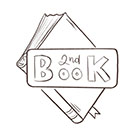|
[n 1]
|
Notes
- ↑
From the beginning
Before God created anything, there was just God. [1]
He looked for a place to put a universe. There was nothing larger than God. [2] There was no place outside of him to create. He could only put the new things inside of himself.
He opened a pocket within himself and spoke into it. [3] When the heavens and earth were finished; he created his friend. [4] [5] [6]
"Hi Adam, I am God; let me teach holiness and love. [7] I will give you a tree as a symbol of holiness. It is separate and different from other trees. You should not eat from it, just because I am God. [8] I am Holy. I am Love."
Adam not understanding God, would 'declare' his own rules as God had done. [9] He ate the fruit from the tree. [10] There should be a more explicit connection here between eating and learning (probably about the otherness/holiness of God and the tree) in the context of Adam.
God's name tells us that Adam did not understand God. God's name is Elohim. 'El' means 'God', 'im' means 'his people'. The 'H' sound means they don't understand. God is separated from his people because they don't understand. Each of the letters are symbols with meaning.
Everything... absolutely everything after this is to teach who God is. Through the dietary law, he reveals his nature by showing how to select good teachers.
Symbols
Vocabulary
|
Art
Questions
Answers
|
|
